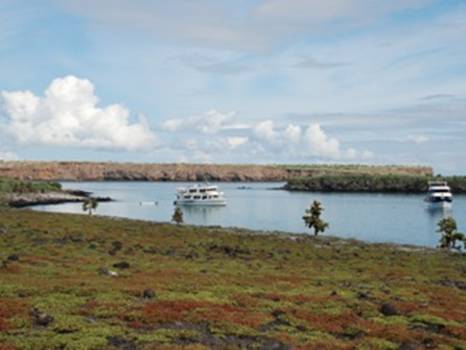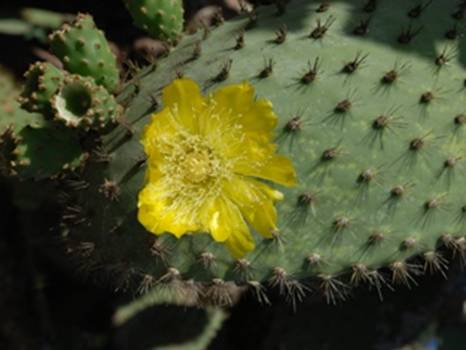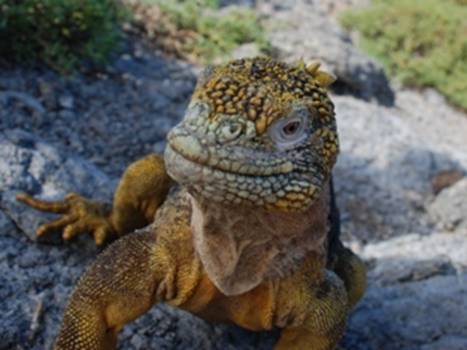Well Passed Half Way Now & Galapagos IX 07:48:08S 119:46:42W

|
We are continuing to blast a trail to Nuku Hiva, with 191nm
covered in the last 24 hour recorded period. We have slowed down a bit now, as
we decided to put a reef in the main at 1800 local time last night (Note we are now on minus 9.5 UTC hours). This
was to ease the pressure on the rig, as it was starting to make some worrying
grinding and moaning noises and also to make the sailing in the dark a little
less exciting for Jennie. Apparently, surfing down large For the statistically minded, we passed the 10,000nm mark
(since leaving Now, the continuing saga of our expedition around the
Galapagos, on the MV Angelito 1. So it was that on an overnight passage we once
again crossed the Equator North to South. This time with no dressing up, as it
was the middle of the night when it happened! Our morning arrival was in Unlike some of the more barren
This
Their staple diet is the flowers from the local cactus. This
variety grows up to 4 metres tall. Nearly all of the Iguanas we saw were
ensconced at the base of a large cactus plant, waiting for nature to do its
thing and for the flowers to drop off. These guys don’t do anything in a
hurry. Can’t say as I blame them as it was around 34° Celsius and over
90% humidity at this time of the year! Except when a flower drops and then
Lindford Christie wouldn’t have stood a chance!!
At this point I thought it might be fun to try out my new
wide angle macro lens. The picture below was taken with the front of the
lens no more than six inches away from his face. As you can see he was none too
chuffed about that! But the armour plated body is a master piece of bioengineering.
I took loads more pics, with details of his legs, even his claws. But budget
restrictions mean I have to limit the pictures I can afford to post on the
blog.
The northern part of the island has a long range of cliffs
that are some 200 feet above sea level. These are home to many nesting birds,
such as the Blue Footed Boobies, Masked Boobies, Lava Gulls, Swallow Tailed
gulls, Petrels et al. But the prince of the breeding birds here was the Tropic
Bird. They nest in borrows on the cliff face and are very shy. They are about
the same size as the regular sea gull we are used to in the UK, (Not like the
ones on steroids that you see in Dartmouth, thanks to the tourists, who
can’t read “Don’t
feed the Gulls”……). The difference being the
exquisite tail that is made up of two long trailing feathers that are much
longer than the rest of the body. It is simply hopeless trying to convey the beauty of this
bird in flight with still
images. You just have to see it gracefully swooping down the cliff face
out to sea. Or ducking the attentions of a hungry Frigate birds. It was a
sheer joy to watch this delightful creature in flight. Literally, poetry in
motion.
The waters at the base of the cliff were crystal clear and
simply teaming with fish. We could clearly see, Emperor Angel fish, Parrot
fish, ranks of Surgeon fish, and more Wrasse of various flavours than you can
shake a stick at! We were also treated to the vision of a Giant Eagle Ray,
majestically “flying” along just below the surface.
So after an exhilarating 3 hour walk, we returned to the
landing point to be ferried back to the mother ship. Then lunch, prior to our
departure to SantaFe, and another trip across the Equator! Whilst we were
waiting I spotted this very young sea lion pup having a knap. As you can see
from the Sally Lightfoot crabs meandering past him, he was really tiny. Cute eh?
|






